#ria lagartos nature reserve
Photo

Living Fossil
An Atlantic horseshoe crab (Limulus polyphemus) in the mangroves of Ria Lagartos nature reserve, Yucatán. Females can lay up to 20,000 eggs in one night playing an important role in providing nutrient-rich eggs to migratory birds.
by Fernando Constantino Martínez Belmar, Mexico
Mangrove Photography Awards
#fernando constantino martinez belmar#mexico#photographer#mangrove photography awards#living fossil#atlantic horseshoe crab#crab#marine#limulus polyphemus#ria lagartos nature reserve#yucatan#animal#nature
35 notes
·
View notes
Text
Some interesting facts to know before going on a private Rio Lagartos flamingo pink lakes tour
Stowed away in a paradisiacal corner of the Yucatan Peninsula are the shocking pink lakes in Mexico, officially called Las Coloradas. The captivating scene is famous for its cotton candy hued waters, pastel blue skies, and delicate white sand beaches. The lakes are an integral part of the Ria Lagartos Biosphere Reserve, a safeguarded UNESCO Biosphere home to various intriguing and beautiful creatures. During a private Rio Lagartos flamingo Pink Lakes tour, it is possible to observe flamingos, crocodiles, jaguars, sea turtles, and various birds.
Reason for the pink color of the lake
Individuals wonder what makes the lakes so dynamically pink. First, the water and general climate are staggeringly salty, which draws in brine shrimp, plankton, and red-colored algae. Then, as the water evaporates in the glinting Mexican sunlight, these creatures become more concentrated and eventually make the famous radiant pink water!
What’s more, here is a pleasant reality to share: did you know that flamingos are pink since they eat the red-colored algae, plankton, and shrimp from the water? However, their feathers are ordinarily white!

What is the use of the Pink Lakes?
Two principal businesses use the pink lakes: fishing and harvesting of sea salt. Sea salt harvesting is the greatest of the two businesses, with a piece of the lakes being private property that a salt processing plant possesses.
Strangely, sea salt harvesting in the pink lakes was initially started by old Mayans. They adored the region and used the profoundly important salt! It was significant for both safeguarding of food and dietary necessities. The Mayans would wisely mine the salt from the shallow tidal ponds brought about by floods in mangroves and afterward transport it by kayak to parts of the enormous Mayan empire.

What Is Possible to do at the Pink Lakes?
The pink pools of Las Coloradas are not bountiful in activity and experience like other touristic regions of the Yucatan Peninsula. You will not find amusement parks, ATV tours, or parasailing there.
However, the fantastic region embraces restrictiveness and serenity. The primary focus is respecting the romantic lakes, pleasant scenes, and untamed life. A little yet unspoiled beach region in the Las Coloradas town offers the best opportunity to pause for a moment and embrace the vibe.
The most famous visit in the space is the Rio Lagartos natural reserve boat tour. You will have the opportunity to notice the dazzling pink flamingos at home, encounter the white clay bath and cruise the Las Coloradas pink lakes!
For the best exploration during a private Rio Lagartos flamingo Pink Lakes tour, contact Best Maya Tours at 52 5544985184.
0 notes
Photo

Grooming the descendant by Claudio Contreras Koob, Mexico
‘This fluffy Caribbean flamingo chick is less than five days old and is being preened by one of its parents in the Ría Lagartos biosphere reserve, Yucatán, Mexico. Chicks remain in the nest for less than a week; they then wander around the colony in crèches and start to feed for themselves, although their parents still continue to feed them for several months. The flamingo colony is highly sensitive to human presence, so Claudio could only approach the colony on all fours while hiding underneath a camo throw-over.’
Photograph: Claudio Contreras Koob/Natural History Museum
#nature#wildlife#animals#grooming the descendant#flamingo#birds#descendant#claudio contreras koob#mexico#fluffly#caribeean#caribbean flamingo#chick#baby#mother#transparent#love#parents#family#ria lagartos biosphere reserve#reserve#biosphere#ria lagartos#conservations#yucatan#nest#colony#independent#hiding#photographer
7 notes
·
View notes
Video
flamingo painted watercolors and with the natural water of celestun. When to Visit the #Flamingos in Celestun Flamingos migrate throughout the year. They stay in #Celestun Mexico for their courtship rituals. Tens of thousands of flamingos live in the #Yucatan peninsula year-round, but they often change their breeding and nesting locations. The Celestun Biosphere Reserve is their favourite breeding ground, and Ria Lagartos is great for nesting #love #flamingo #art #watercolors #artist #marcelloibanez (at Flamingos De Celestun) https://www.instagram.com/p/Bzc90DbgjAJ/?igshid=1pbuiwgoknml8
1 note
·
View note
Text
Enjoy the nature, conect with the wildlife and discover all the amazing experiences of the ria Lagartos have to you!!!
Reservations with
Biol. William Canto
9861138918

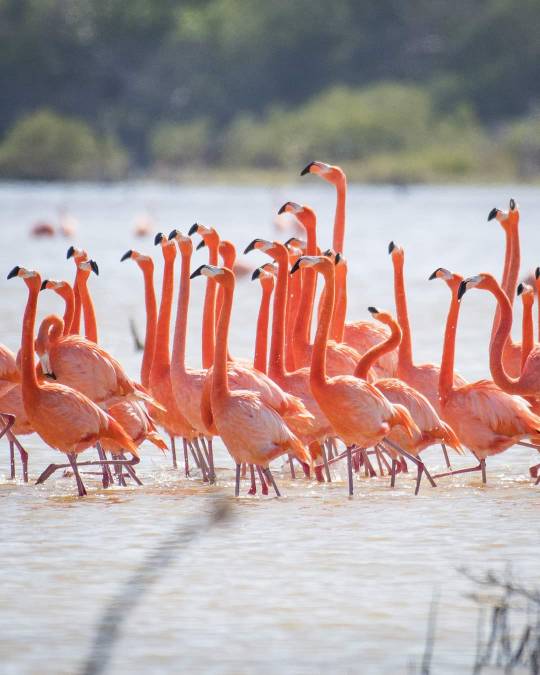
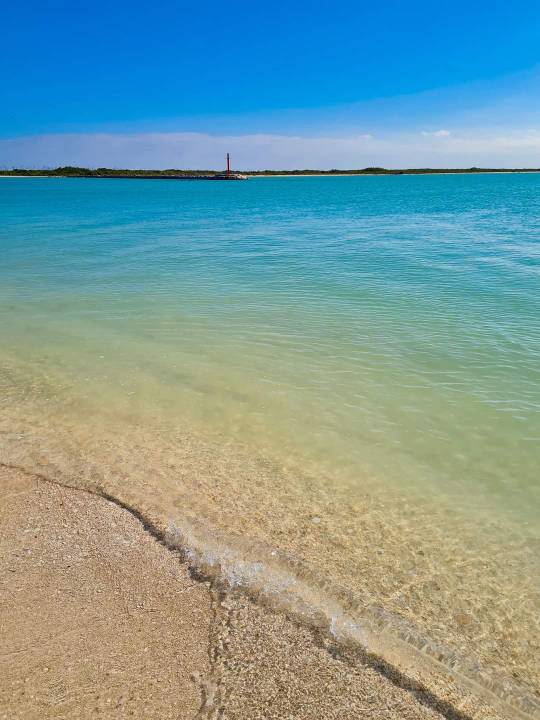
#turismo#riolagartosmexico#riolagartosyucatanmexico#riolagartosyucatan#nature#riolagartos#riolagartosguide#photo#flamencosrosas#naturetour#naturephotography#naturaleza#mexico#discoveryucatan
0 notes
Photo
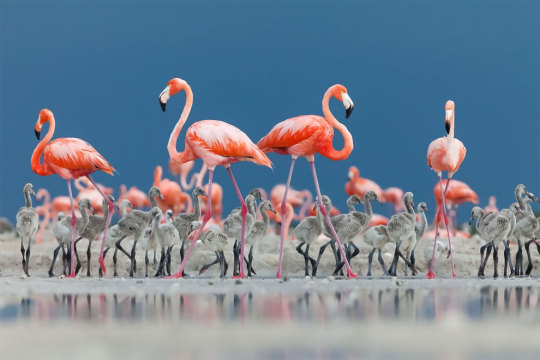
A breeding colony of Caribbean, or American, flamingos, in Ría Lagartos biosphere reserve, on the Yucatán Peninsula, Mexico.
Photo by Claudio Contreras Koob
Wildlife Photographer of the Year
#claudio contreras koob#photographer#wildlife photographer of the year#breeding colony#bird photography#caribbean flamingos#american flamingos#ria lagartos biosphere reserve#yucatan peninsula#mexico#animal#nature
51 notes
·
View notes
Photo

The fluid that feeds the nestling is called crop milk. Both adults produce this secretion in the upper part of the intestine.
A New Book Illuminates the Lives of the Elusive, Pink-Plumed Flamingos in Mexico’s Yucatán Peninsula
In the Yucatán Peninsula, the rich wetland environment of the Ría Lagartos Biosphere Reserve is one of the most important sites for flamingos. The pink-pigmented birds flock to the area for breeding each year, with officials registering approximately 15,000 nests and 30,000 adults inhabiting the area in 2021 alone.
All images © Photo © Claudio Contreras Koob and Nature Picture Library

“Soon, I see a little white head peek out of the orange plumage. I imagine that this little creature must think the whole planet is orange,” Contreras Koob says.
#claudio contreras koob#photographer#nonfiction book#nature book#pink flamingos#mexico#yucatan peninsula#ria lagartos biosphere reserve#flamingos#bird photography
69 notes
·
View notes
Photo

To incubate their eggs, flamingos build nesting sites in their colonies. They consist of mud cones that must be constantly maintained so that rising water does not wash away the eggs.
A New Book Illuminates the Lives of the Elusive, Pink-Plumed Flamingos in Mexico’s Yucatán Peninsula
In the Yucatán Peninsula, the rich wetland environment of the Ría Lagartos Biosphere Reserve is one of the most important sites for flamingos. The pink-pigmented birds flock to the area for breeding each year, with officials registering approximately 15,000 nests and 30,000 adults inhabiting the area in 2021 alone.
All images © Photo © Claudio Contreras Koob and Nature Picture Library

Right: An aerial view of flamingos on Mexico’s Yucatán Peninsula
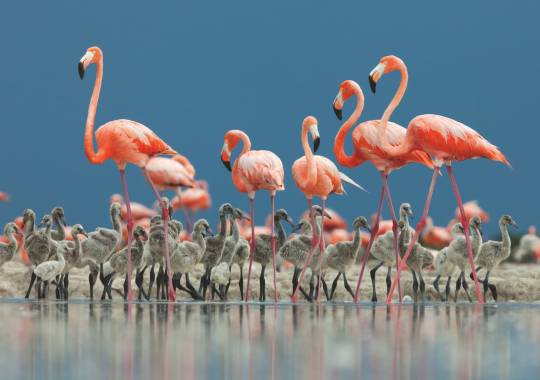
As they grow, the chicks begin to explore the surroundings of the colony, always under the watchful eye of several adult animals who look after them.

The Celestún estuary is a popular place for flamingos and is near the cenotes, underwater water reservoirs that inject fresh water into the middle of a lagoon as if from a spring.
#claudio contreres koob#photographer#nonfiction book#nature book#pink flamingos#flamingos#bird photography#mexico#yucatan peninsula#ria lagartos biosphere reserve#nature
83 notes
·
View notes
Photo
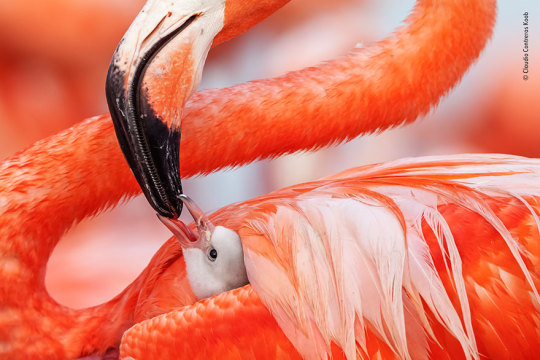
"Beak To Beak"
Ría Lagartos Biosphere Reserve in the state of Yucatán is home to Mexico's largest flock of Caribbean flamingos. This chick is less than five days old – it will stay in its nest less than a week before it joins a crèche of other youngsters who wander around the colony searching for food.
Photographer: Claudio Contreras Koob, Mexico
LUMIX People’s Choice Award
#claudio contreras koob#photographer#mexico#ria lagartos biosphere reserve#yucatan#caribbean flamingos#birds#flamingos#nature#lumix peoples choice award
4 notes
·
View notes